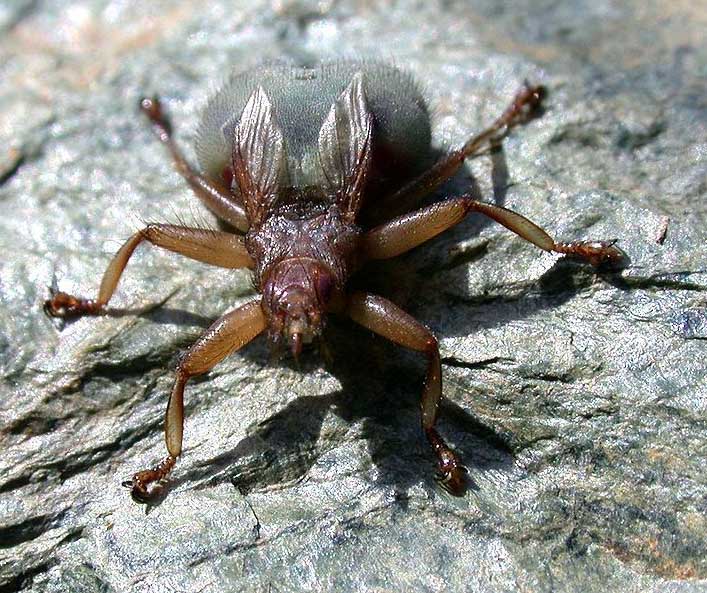
Crataerina pallida (*)
Superregnum: Eukaryota
Cladus: Unikonta
Cladus: Opisthokonta
Cladus: Holozoa
Regnum: Animalia
Subregnum: Eumetazoa
Cladus: Bilateria
Cladus: Nephrozoa
Cladus: Protostomia
Cladus: Ecdysozoa
Cladus: Panarthropoda
Phylum: Arthropoda
Subphylum: Hexapoda
Classis: Insecta
Cladus: Dicondylia
Subclassis: Pterygota
Cladus: Metapterygota
Infraclassis: Neoptera
Cladus: Eumetabola
Cladus: Endopterygota
Superordo: Panorpida
Cladus: Antliophora
Ordo: Diptera
Subordo: Brachycera
Infraordo: Muscomorpha
Sectio: Schizophora
Subsectio: Calyptratae
Superfamilia: Hippoboscoidea
Familia: Hippoboscidae
Genus: Crataerina
Species: Crataerina pallida
Name
Crataerina pallida (Latreille, 1811)
References
Global Biodiversity Information Facility. 2019. GBIF Backbone Taxonomy. Checklist dataset. Taxon: Crataerina pallida. [accessed on 28 June 2020]
Crataerina pallida, the swift lousefly, is a species of biting fly in the family of louse flies Hippoboscidae. These flies are commonly encountered in the nests of the common swift (Apus apus) in Europe and Asia.[1]
The lousefly spends its entire life cycle associated with swifts. The adult lousefly produce larvae in the late summer months which then pupate and lie dormant during the winter months inside the vacated swift nest. These parasites have highly aggregated population distribution and high levels of host prevalence. The adult fly then hatch out in spring when the first swift eggs are laid, by the returning adults, and feed on the blood of the nestlings and the adults, sucking about 25 mg of blood every 5 days. They can be a serious pest of adult and nestling swifts.
Crataerina pallida is vertically transmitted ectoparasite, in that it is passed from parent host on to offspring. C. pallida are relatively benign, because their own species fitness will depend on successful reproduction of swifts. Evidence suggests that C. pallida had little if any effect on nestling growth or fledging success rate.[2]
Eggs of the common swift (Apus apus) and (below) pupae of Crataerina pallida
References
Hutson, A.M. (1984). Diptera: Keds, flat-flies & bat-flies (Hippoboscidae & Nycteribiidae). Handbooks for the Identification of British Insects. Vol. 10 pt 7. Royal Entomological Society of London. pp. 84 pp.
Tompkins D. M.; Jones T.; Clayton D. H. (1996). "Effect of vertically transmitted ctoparasites on the reproductive success of Swifts (Apus apus)". Functional Ecology. Oxford. 10 (6): 733–740pp. doi:10.2307/2390508. ISSN 0269-8463. JSTOR 2390508.
Retrieved from "http://en.wikipedia.org/"
All text is available under the terms of the GNU Free Documentation License

